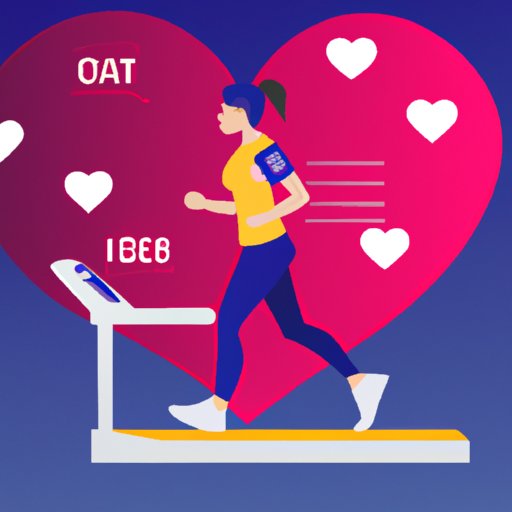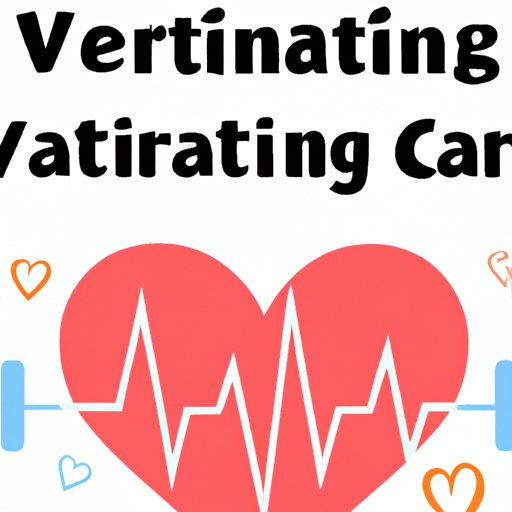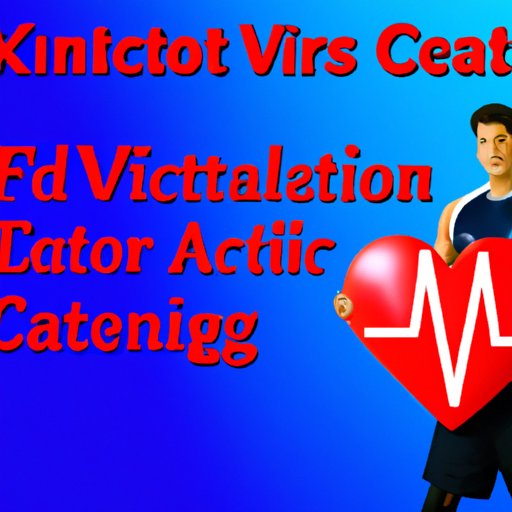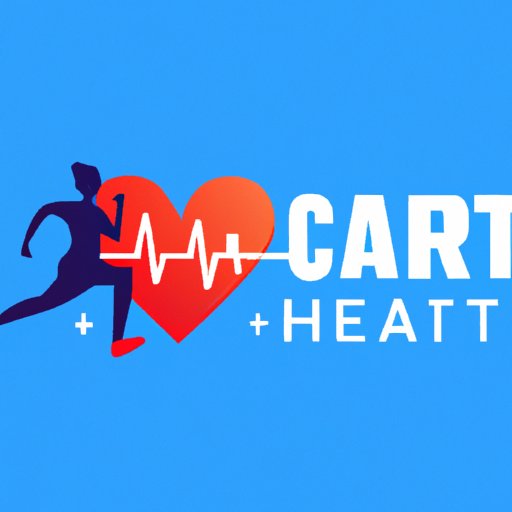Introduction
Cardiovascular fitness is one of the most important aspects of overall health and wellness. It refers to the ability of the heart and lungs to supply oxygen-rich blood to the muscles during physical activities. This can be achieved through regular exercise, healthy eating habits, and adequate rest. The benefits of cardiovascular fitness include improved heart health, increased energy levels, and better overall health.
Definition of Cardiovascular Fitness
Cardiovascular fitness is defined as the ability of the body to efficiently deliver oxygen and nutrients to the cells, tissues, and organs. It is also known as cardiorespiratory fitness, aerobic fitness, or endurance fitness. The American Heart Association recommends that adults should get at least 150 minutes of moderate intensity aerobic activity, or 75 minutes of vigorous aerobic activity, per week. This can include walking, jogging, swimming, cycling, and other activities that involve sustained movement of the arms and legs.
Overview of Benefits and Requirements
The benefits of cardiovascular fitness are numerous. Regular exercise helps to strengthen the heart muscle, reduce stress, and improve overall health. It can also help to lower cholesterol levels, reduce the risk of developing certain diseases, and increase life expectancy. Additionally, improving cardiovascular fitness can lead to increased energy levels, improved mental clarity, and better overall quality of life.
Anatomy of Cardiovascular Fitness
To understand the importance of cardiovascular fitness, it is important to understand the anatomy of the heart and how it works. The heart is a muscular organ that pumps blood throughout the body. It consists of four chambers: two atria, which receive blood from the veins, and two ventricles, which pump the blood to the lungs and then to the rest of the body. The heart also contains valves, which control the flow of blood.

Exploring the Benefits and Requirements for a Healthy Heart
Regular exercise is essential for maintaining a healthy heart. According to a study conducted by the American Heart Association, people who do at least 150 minutes of moderate-intensity aerobic activity each week have a much lower risk of coronary heart disease than those who are inactive. Additionally, research has shown that regular exercise can help to lower blood pressure, reduce bad cholesterol levels, and reduce the risk of stroke and other cardiovascular diseases.
Understanding the Different Types of Cardio Exercises
There are many different types of exercises that can be used to improve cardiovascular fitness. These include aerobic exercises such as running, swimming, and cycling; strength training exercises such as weight lifting; and high intensity interval training (HIIT). Each type of exercise has its own set of benefits and requirements, so it is important to find the right balance for your individual needs.

Cardio Workouts: The Best Exercises to Improve Cardiovascular Fitness
Aerobic exercises are the most effective way to improve cardiovascular fitness. These exercises involve sustained movement of the arms and legs and can include walking, jogging, swimming, cycling, and dancing. Aerobic exercises help to strengthen the heart and lungs and improve overall circulation. They can also help to reduce stress and increase energy levels.
Strength Training Exercises
Strength training exercises are another great way to improve cardiovascular fitness. These exercises involve using weights or resistance bands to build muscle and strength. Strength training can help to improve muscle tone, reduce fat, and increase endurance. Additionally, it can help to reduce blood pressure and cholesterol levels.
High Intensity Interval Training (HIIT)
High intensity interval training, or HIIT, is a form of exercise that involves short bursts of intense activity followed by periods of rest. HIIT is an effective way to improve cardiovascular fitness because it helps to increase the heart rate and burn more calories in a shorter amount of time. It is also a great way to boost metabolism and increase energy levels.
Cardiovascular Fitness: How Diet Plays an Important Role
In addition to regular exercise, a healthy diet is also important for maintaining optimal cardiovascular fitness. Eating a balanced diet that is rich in fruits, vegetables, whole grains, lean proteins, and healthy fats can help to reduce cholesterol levels and improve overall heart health. It is also important to limit consumption of processed foods, sugar, and saturated fats.
Nutrients Needed for Cardiovascular Health
Certain nutrients are especially important for maintaining optimal cardiovascular health. These include omega-3 fatty acids, fiber, magnesium, potassium, and vitamins C and E. Omega-3 fatty acids can help to reduce inflammation, while fiber can help to reduce cholesterol levels. Magnesium, potassium, and vitamins C and E can all help to protect the heart and reduce the risk of developing heart disease.
Foods to Avoid
In addition to eating a balanced diet, there are certain foods that should be avoided in order to maintain optimal cardiovascular fitness. These include trans fats, saturated fats, processed meats, and refined carbohydrates. Eating these foods can increase the risk of developing heart disease and stroke. Therefore, it is important to limit their consumption and focus on eating a diet that is rich in whole foods.

Cardiovascular Fitness through Sports: A Comprehensive Guide
Sports can be an effective way to improve cardiovascular fitness. Many sports require sustained movement of the arms and legs, which can help to strengthen the heart and lungs. Additionally, sports can provide a fun and engaging way to stay active. Some of the best sports for cardiovascular fitness include swimming, running, cycling, soccer, basketball, and tennis.
Sports that Improve Cardiovascular Fitness
Swimming is one of the best sports for cardiovascular fitness. Swimming is a low impact activity that allows you to move at your own pace and work at your own intensity level. It can also help to promote muscle strength and flexibility. Running is another great option for improving cardiovascular fitness. Running can help to increase endurance and build muscle strength. Cycling is also a great way to increase cardiovascular fitness, as it helps to strengthen the heart and lungs while burning calories. Soccer, basketball, and tennis are also excellent options for improving cardiovascular fitness.
Strategies for Optimal Performance
When participating in sports for cardiovascular fitness, it is important to take the proper precautions to ensure optimal performance. This includes warming up before exercising, stretching after exercising, and drinking plenty of water. Additionally, it is important to set realistic goals, monitor progress, and adjust the intensity of the workout as needed.

Cardiovascular Fitness: Tips and Tricks to Maximizing Your Results
Improving cardiovascular fitness requires dedication and commitment. To maximize results, it is important to set achievable goals and stay motivated. Additionally, it is important to track progress and adjust the intensity of the workout as needed. Finally, it is important to remember to take breaks and rest when needed in order to prevent burnout and injury.
Setting Goals for Improvement
Setting goals is an important part of improving cardiovascular fitness. Goals should be specific, measurable, attainable, and realistic. For example, a goal could be to jog three times a week for 30 minutes each time. This goal is specific, measurable, attainable, and realistic. By setting goals, it is easier to stay motivated and track progress.
Staying Motivated
Staying motivated is key to achieving optimal cardiovascular fitness. Finding ways to stay motivated can include listening to upbeat music, working out with a friend, or taking part in group fitness classes. Additionally, it is important to reward yourself for reaching milestones and to keep a positive attitude.
Monitoring Progress
Monitoring progress is an important step in achieving optimal cardiovascular fitness. Tracking progress can be done in several ways, including keeping a journal, tracking heart rate, and measuring performance. Additionally, it is important to adjust the intensity of the workout as needed in order to prevent overtraining or injury.
Conclusion
Cardiovascular fitness is an important aspect of overall health and wellness. Regular exercise, healthy eating habits, and adequate rest are all necessary components of a successful cardiovascular fitness program. Additionally, understanding the different types of exercises and setting achievable goals can help to maximize results. With dedication and commitment, it is possible to achieve optimal cardiovascular fitness and enjoy the many benefits that come with it.
(Note: Is this article not meeting your expectations? Do you have knowledge or insights to share? Unlock new opportunities and expand your reach by joining our authors team. Click Registration to join us and share your expertise with our readers.)
